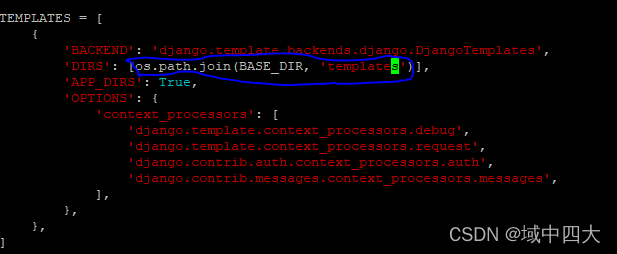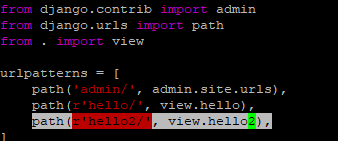模板介绍
上文helloworld中,我们是直接将hello world以文本的方式通过django.http.HttpResponse传到http访问response中,这样我们将视图与数据混合到了一起,并不方便维护代码,所以建议采用模板的方式,将视图与数据分离开来。
建立模板
模板文件
makdir templates
vim templatges/first.html
<h1>{
{ hello }}</h1>
其中 { { hello }} 是变量, 用双大括号可以引用一个变量
声明模板文件路径
在hellowold/settings.py的’DIRS’中加入templates的路径,添加方式如下图
需要注意是否以及引用os库,如果没有引用需要额外添加
import os

编写代码使用模板
vim helloworld/view.py
from django.shortcuts import render
def hello2(request):
context = dict()
context['hello'] = 'Hello World!'
return render(request, 'first.html', context)
配置访问路径
path(r'hello2/', view.hello2),

结果
python manage.py runserver
